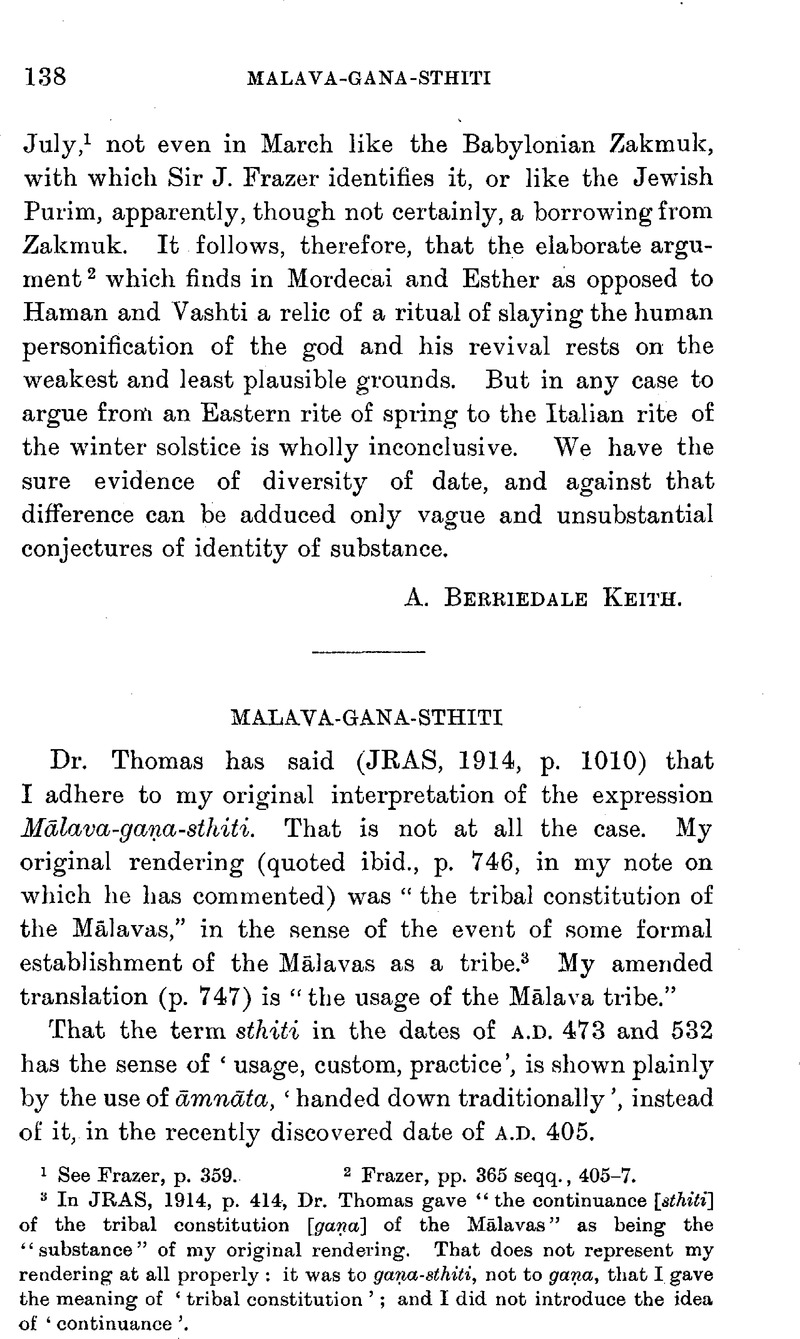No CrossRef data available.
Article contents
Abstract

- Type
- Other
- Information
- Copyright
- Copyright © The Royal Asiatic Society 1915
References
page 138 note 1 See Frazer, , p. 359.Google Scholar
page 138 note 2 Frazer, , pp. 365 seqq., 405–7.Google Scholar
page 138 note 3 In JRAS, 1914, p. 414Google Scholar, Dr. Thomas gave “the continuance [sthiti] of the tribal constitution [gaṇa] of the Mālavas” as being the “substance” of my original rendering. That does not represent my rendering at all properly: it was to gaṇa-sthiti, not to gaṇa, that I gave the meaning of ‘tribal constitution’; and I did not introduce the idea of ‘continuance’.
page 139 note 1 Amarakōśa (Bombay, 1896), p. 129, verses 39, 40 (twenty-two synonymous terms): Abhidliānachintāmani, verse 1411 (thirty-five terms), under which the editors, Boethlingck and Rieu, have explained all these terms by the German menge, which seems to mean a ‘multitude, crowd, quantity’.
page 139 note 2 “School”, Jacobi, , SBE, vol. 22, p. 288Google Scholar, note 2 (quoted by Dr. Thomas): “section”, Lüders, List of the Brāhmī inscriptions, index, p. 215.
page 139 note 3 Oldenberg, , SBE, vol. 13, pp. 175, 195Google Scholar; vol. 17, pp. 34, 38; vol. 20, p. 210.
page 140 note 1 Witness, in addition to numismatic evidence, (1) the Pabilōsā inscriptions, which mention Rājas of Adhichhatrā; Lüders, List, Nos. 904, 905, and see this Journal, 1914, p. 89: and (2) the Bēsnagar inscription, which mentions the Rāja Bhāgabhadra; Lüders, No. 669, and see this Journal, 1909, p. 1055, and subsequent papers: there is no good reason for identifying Bhāgabhadra with either the Bhāgavata or the Bhadra or Bhadraka (with variants including Antaka and Andhraka) whom the Purāṇas name among the Śunga kings.


